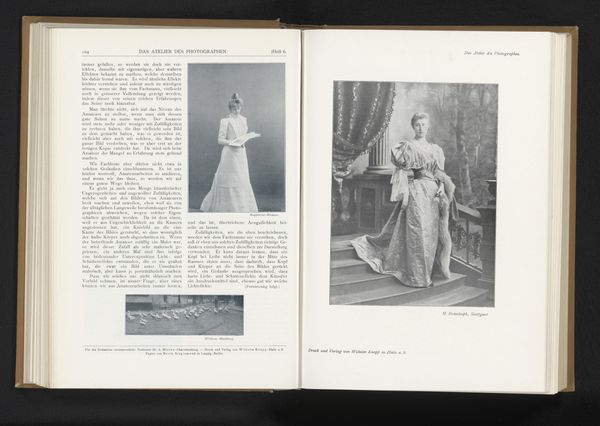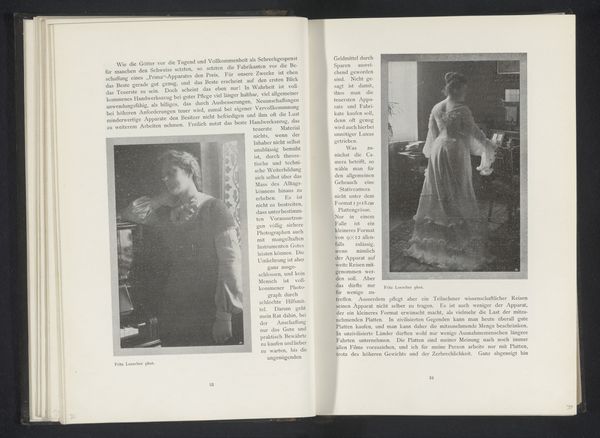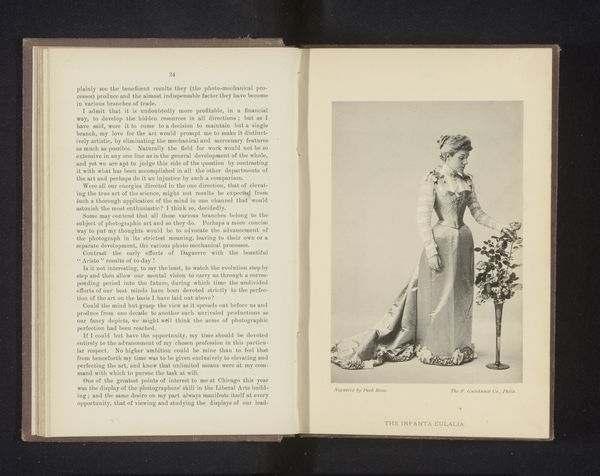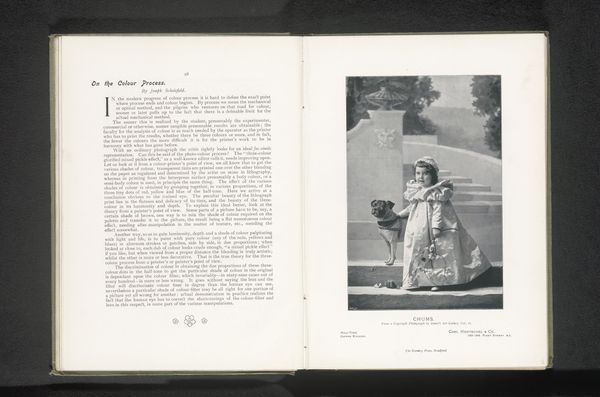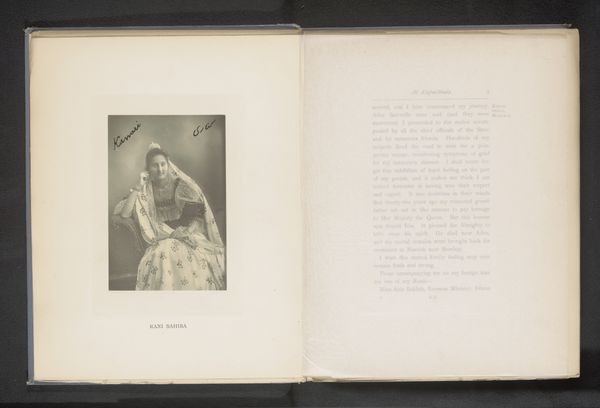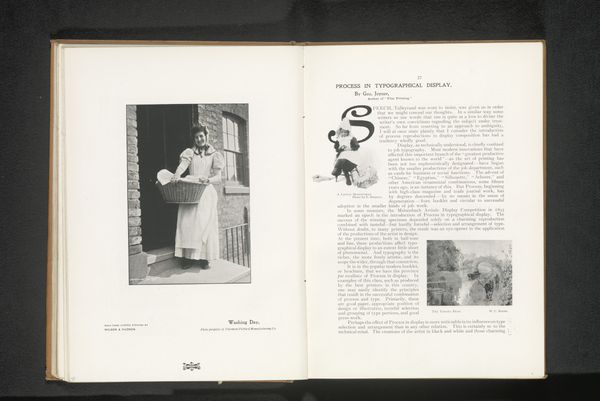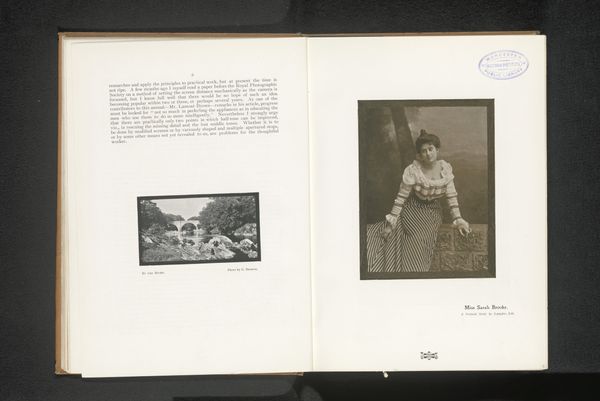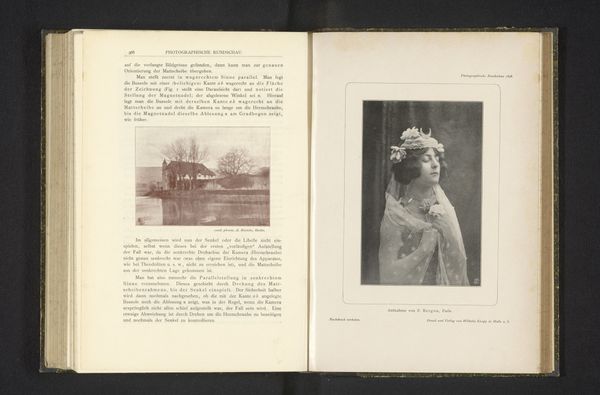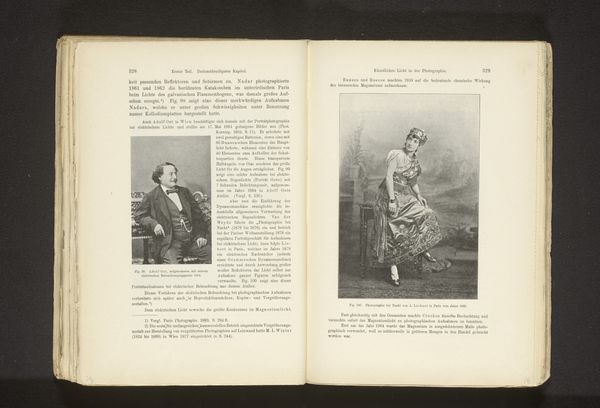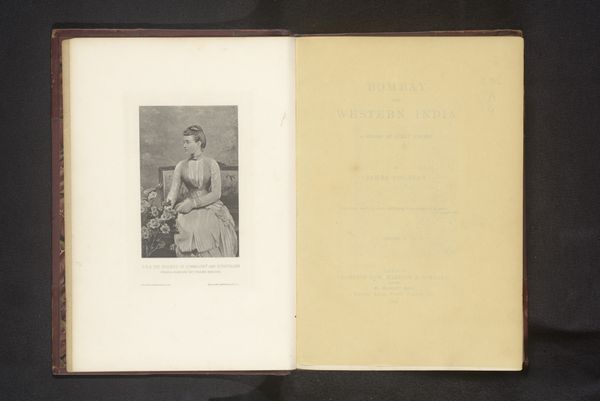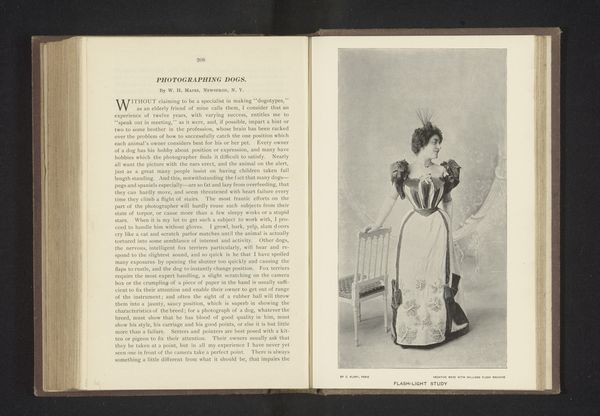
Portret van een onbekende vrouw, zittend op de leuning van een stoel before 1900
0:00
0:00
print, photography, gelatin-silver-print
#
portrait
# print
#
landscape
#
photography
#
gelatin-silver-print
#
genre-painting
Dimensions: height 186 mm, width 131 mm
Copyright: Rijks Museum: Open Domain
Curator: Look at this compelling portrait—a gelatin silver print before 1900 by Loescher & Petsch, entitled "Portret van een onbekende vrouw, zittend op de leuning van een stoel"—that's "Portrait of an Unknown Woman, Seated on the Armrest of a Chair," for us. It is held here at the Rijksmuseum. What are your initial thoughts? Editor: Somber. The subject's gaze feels piercing, even through the muted tones of the silver print. The diagonal sweep of her gown across the frame is visually very dominant. There is an unusual off-centered composition that captures my attention. Curator: The way she is seated, almost perched precariously on the chair's armrest, creates an interesting tension. It disrupts the conventions of formal portraiture that was in vogue at the time, doesn't it? A kind of resistance to accepted representation that offers complexity of character and position. Editor: Definitely. Considering the era, her attire suggests affluence. However, her posture implies something different; there may be boredom, discomfort or subversion perhaps to societal norms that demand restraint from women. The backdrop is simple, and it keeps the eye focussed. Curator: Precisely. The plain background amplifies the woman's presence. Her dress—long and flowing—with the puffy sleeves contrasts with the severity of the overall photograph. The textures—the sheen of the fabric against the matte surface of the print, for instance—lend a tactile quality. We should consider who might have commissioned or consumed the work in those early decades of the medium. Editor: And how the rise of photography altered how people perceived reality and the way that public figures and ideals were reproduced. This would change painting styles forever. Photography made imagery so much more accessible. Curator: Indeed, the portrait acts as a lens onto late nineteenth-century societal constructs, power dynamics, the industrialization of the portrait and expectations surrounding feminine representation and decorum, but its visual impact arises in the very careful arrangements. It offers much upon deeper looking, doesn't it? Editor: Absolutely, the image presents a multifaceted analysis; what initially appears like a formal portrait challenges convention, presenting opportunities to engage, deconstruct, question.
Comments
No comments
Be the first to comment and join the conversation on the ultimate creative platform.
